
Hyperfixation and ADHD Overlap
Understanding the Deep Zones of Focus: The Complex Interplay of Hyperfixation and ADHD
Unlocking the Mysteries of Hyperfixation in Neurodivergence
Hyperfixation is a phenomenon that has garnered increasing interest in understanding attention management in neurodivergent conditions, particularly ADHD and autism. While not officially recognized as a diagnostic symptom, hyperfixation significantly influences behaviors, emotional health, relationships, and daily functioning. This article explores the essence of hyperfixation, its neurobiological underpinnings, its overlap with ADHD, and how it differs from similar phenomena such as hyperfocus and obsession. We also examine strategies for managing hyperfixation to harness its strengths and mitigate its challenges.
Defining Hyperfixation: Characteristics and Personality Traits
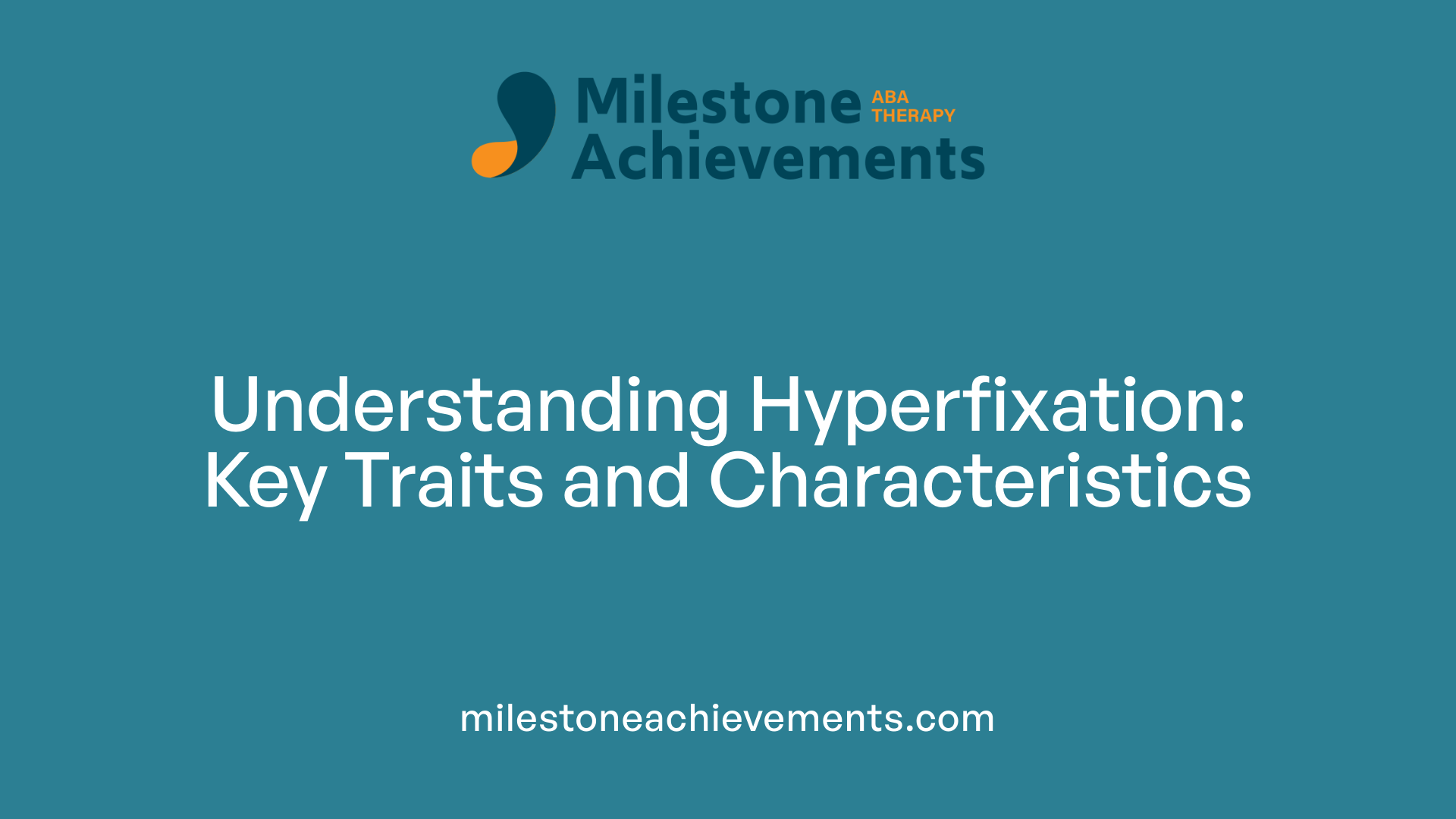
What is hyperfixation and what are its characteristics?
Hyperfixation is an intense, persistent focus on a particular activity, object, person, or interest that often dominates an individual’s attention. It involves becoming so absorbed in the focus that other parts of daily life—such as responsibilities, social interactions, and basic needs—are neglected temporarily or for extended periods.
This phenomenon is especially common among neurodivergent individuals, including those with ADHD and autism, but it can also be experienced by anyone as a way to cope with emotional stress or negative feelings. During hyperfixation, a person may lose track of time completely, often unaware of the passing hours. They might forget to eat, sleep, or attend to other obligations while immersed in their focus.
Signs of hyperfixation include difficulty shifting attention away from the object of fixation, becoming single-mindedly enthusiastic, and experiencing tunnel vision that limits awareness of surroundings. The duration of hyperfixation can range from a few minutes to several months, depending on the individual and circumstances.
While hyperfixation is not classified as an addiction, it reflects underlying neurological processes like dopamine surges that reinforce focus and engagement. These intense periods of concentration can be positive, fostering skill development and deep learning. However, if left unchecked, hyperfixation may become overwhelming or obsessive, leading to negative impacts on mental and physical health.
In summary, hyperfixation is characterized by an automatic and all-consuming preoccupation that can sometimes serve as a psychological escape but may also interfere with daily responsibilities and overall well-being. Managing hyperfixation involves awareness and strategies to balance focus with everyday needs.
Hyperfixation and ADHD: The Connection Explained
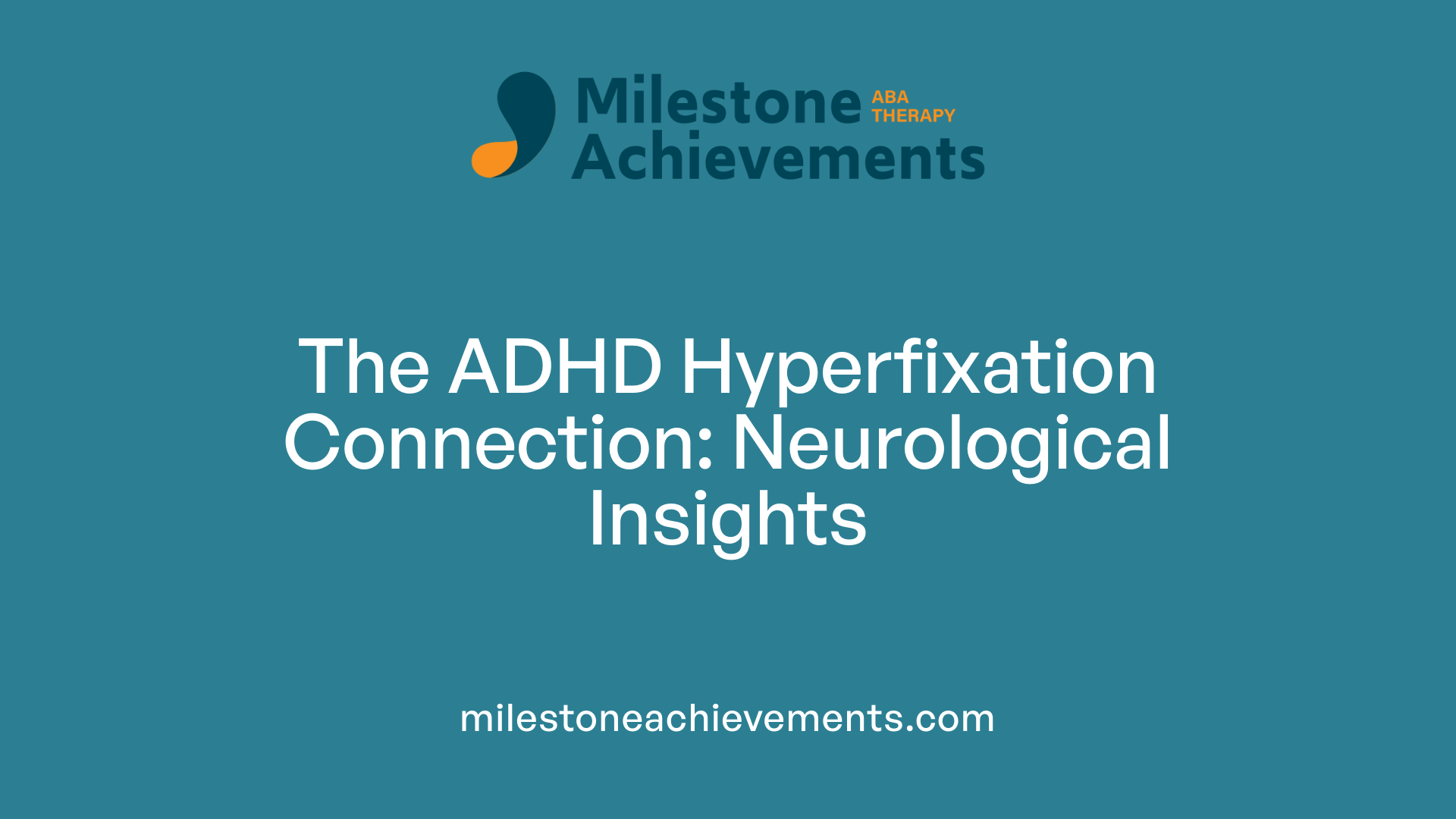
What is the relationship between hyperfixation and ADHD?
Hyperfixation is a widespread phenomenon among individuals with ADHD, involving an intense and often prolonged focus on specific interests or activities. Unlike ordinary interests, hyperfixation can lead people to become completely absorbed, to the point of neglecting other responsibilities or personal needs.
This behavior stems from complex neurological factors. In particular, dopamine—a neurotransmitter that influences motivation, pleasure, and the brain's reward system—plays a significant role. People with ADHD often experience lower dopamine levels, which makes certain activities that temporarily increase dopamine, like engaging with a favorite hobby or topic, especially motivating.
Neurological challenges in executive functions, such as impulse control and shifting attention, also contribute to hyperfixation. When the brain struggles to disengage from a stimulus, the individual may become stuck on that focus, leading to potential impacts on daily life.
Hyperfixation can offer benefits, such as mastery of a skill, deep learning, or emotional comfort. However, it can also have downsides. This intense focus might cause neglect of basic needs—like eating, sleeping, or personal hygiene—and interfere with responsibilities or social relationships. After a period of hyperfixation, many experience a “hyperfixation hangover”—a feeling of burnout, emptiness, or guilt, which can impact self-esteem.
Overall, hyperfixation reflects fundamental neurobiological differences in people with ADHD, affecting how their attention is regulated and how motivation is experienced. Recognizing this pattern allows for better strategies to harness its strengths while mitigating its negative effects.
Examples of Hyperfixation in People with ADHD
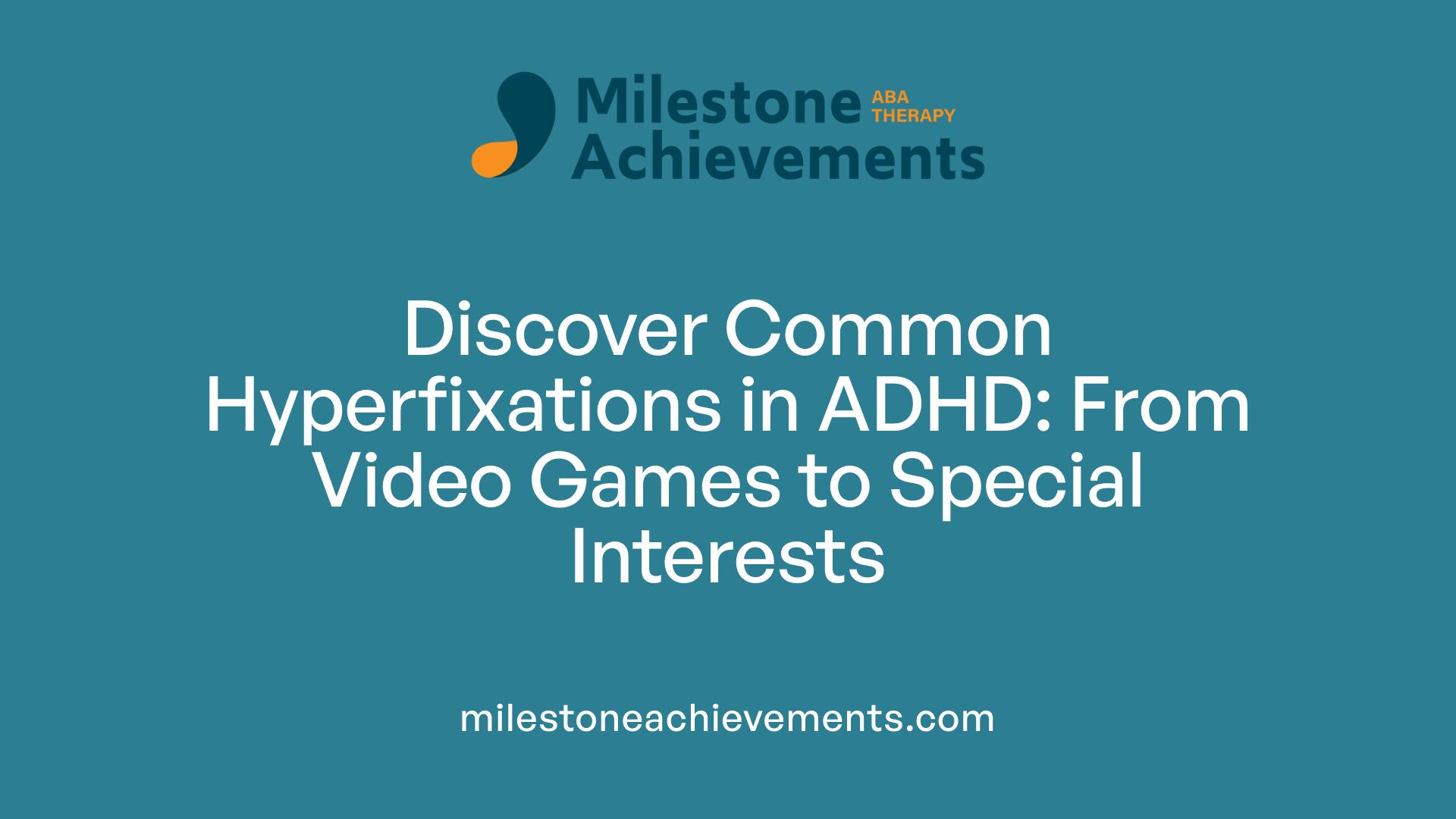
What are common examples of hyperfixation in ADHD?
Common examples of hyperfixation in ADHD include obsessively engaging with activities such as video games, TV series, or hobbies like arts and crafts, often for hours at a time. Individuals may become deeply immersed in a particular topic, like a specific scientific subject, celebrity, or interest, to the point of losing track of time and neglecting responsibilities.
Hyperfixation can also involve intense focus on details, such as obsessively organizing or analyzing objects or interactions. This fixation is often driven by the brain's dopamine system, which rewards engaging activities and encourages prolonged focus.
While hyperfixation can be a powerful tool for learning new skills and gaining expertise, it often comes with side effects. People may become detached from their surroundings, ignoring personal needs like eating, sleeping, or social interactions. This kind of fixation can last for hours, days, or even weeks, depending on the person's interests.
Duration of fixation periods
Hyperfixation periods can vary widely. Some individuals might experience intense focus for a few hours during a single session, while others may stay fixated on the same interest for days or months. In some cases, hyperfixation persists long-term, becoming a central part of the person’s routine or identity.
The length of these fixation periods often correlates with the activity's novelty and personal significance. Activities that stimulate dopamine release tend to extend hyperfixation, sometimes leading to neglect of daily responsibilities.
Behavioral manifestations
Behaviorally, hyperfixation manifests as a loss of awareness of time passing, neglect of basic needs like eating and hygiene, and reduced social interactions. Individuals might become less responsive to external stimuli, tuning out their environment.
They often exhibit single-minded enthusiasm and tunnel vision, focusing exclusively on the object of their interest, which can make transitioning to other activities difficult.
In some cases, hyperfixation may turn obsessive, with individuals repeatedly analyzing or ruminating on a topic or activity. While this intense focus can improve skills and knowledge, it may also lead to stress, frustration, or burnout when the person finally disengages.
In summary, hyperfixation in ADHD involves prolonged, intense fixation on specific activities or topics, lasting from hours to indefinite periods. It manifests behaviorally through neglect of basic needs, disconnection from surroundings, and a persistent focus that can both enhance abilities and interfere with daily functioning.
Distinguishing Hyperfixation from Hyperfocus and Obsession
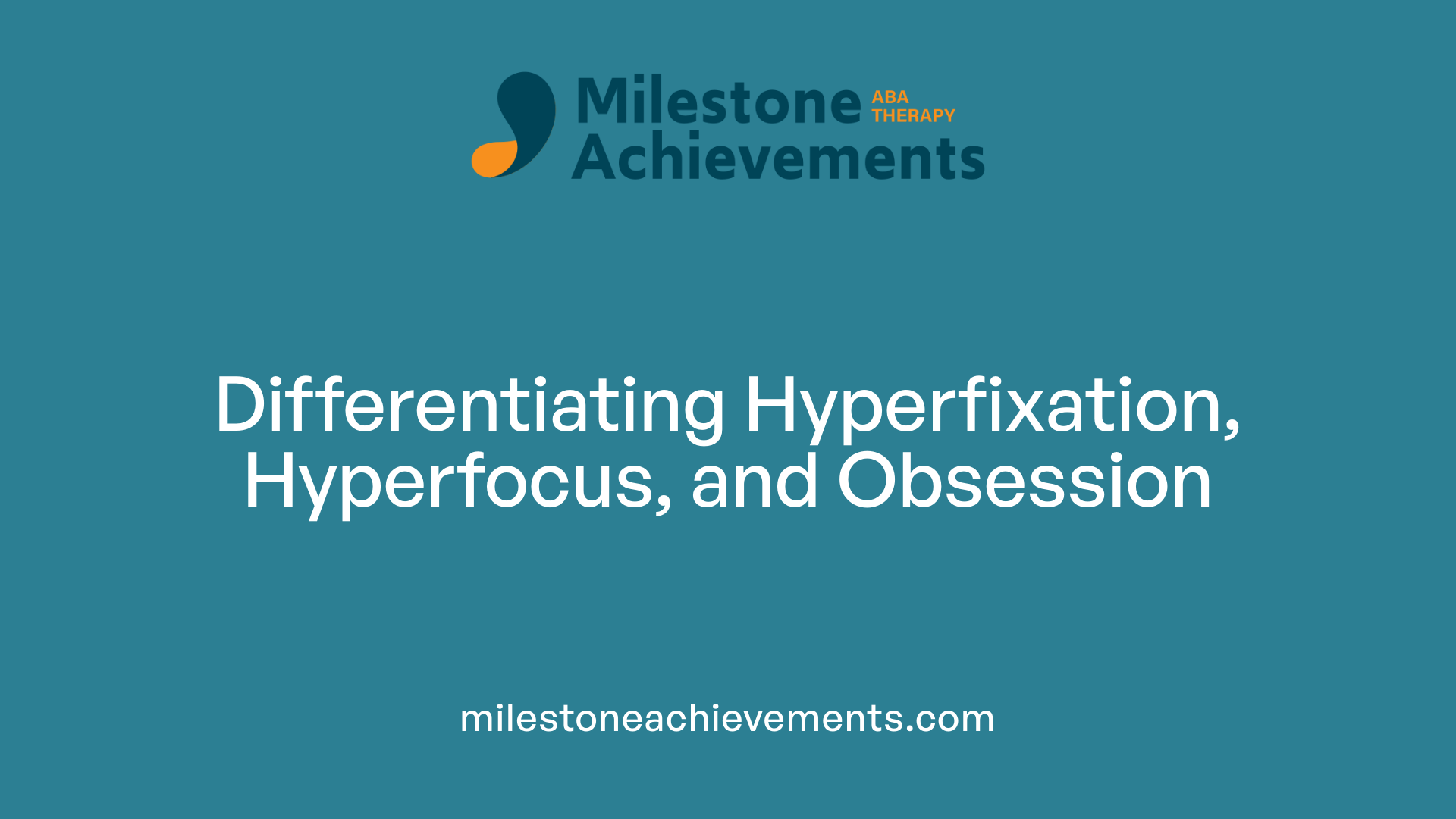
How does hyperfixation differ from hyperfocus?
Hyperfixation and hyperfocus are both states of intense concentration, but they differ primarily in duration and scope. Hyperfixation refers to a prolonged, often obsessive interest in a particular topic, activity, or object that can last from days to years. It often acts as a coping mechanism or influences personal choices, especially in neurodivergent individuals such as those with ADHD or autism.
On the other hand, hyperfocus is a temporary, task-specific state of deep engagement that usually lasts hours to days. It is often triggered by genuine interest or stimulation related to immediate tasks or goals. Hyperfocus can boost productivity and skill development but may also lead to neglecting other responsibilities or personal needs.
While hyperfixation tends to be broader, more persistent, and driven by emotional or psychological needs, hyperfocus is generally more focused on a specific activity or goal and is more transient. Recognizing these differences can help individuals manage their focus better, avoiding burnout or neglect of important aspects of daily life.
Hyperfixation's longer duration and emotional underpinnings often mean it is harder to disengage from, while hyperfocus can be more intentionally directed and controlled with strategies like timed breaks or planning. Both phenomena highlight the importance of awareness in managing attention and motivation, especially for those with ADHD or autism spectrum disorder.
Hyperfixation Versus Obsession: Key Differences

What is the difference between hyperfixation and obsession?
Hyperfixation and obsession are both forms of intense mental focus, but they differ significantly in their nature and impact.
Hyperfixation involves a deep, prolonged engagement with a particular interest, activity, or topic. It is often voluntarily driven by curiosity or passion and can last from weeks to months. People experiencing hyperfixation, especially those with ADHD or autism, usually find the activity pleasurable or stimulating. They may spend hours immersed in their interest, often at the expense of other responsibilities, but this focus is generally associated with positive emotions, personal growth, and skill development.
In contrast, obsession entails persistent, intrusive thoughts that individuals find distressing and hard to control. These thoughts are usually involuntary and can cause significant emotional discomfort or anxiety. Obsessions are a hallmark of conditions like OCD and anxiety disorders. They often involve compulsions—repetitive behaviors aimed at reducing distress—and can severely interfere with daily functioning.
A simple way to distinguish them is by their emotional valence and volitional nature. Hyperfixation tends to be enjoyable and goal-oriented, driven by interest and curiosity. Obsessions tend to be distressing and involuntary, often causing frustration or emotional suffering. Recognizing these differences can guide individuals and clinicians in choosing appropriate coping strategies or therapies.
Understanding whether a focus is a driven, pleasurable hyperfixation or a distressing obsession helps determine the best approach to managing mental health challenges and maintaining a balanced life. Whether fostering healthy passions or addressing intrusive thoughts, this distinction is essential for effective support.
Hyperfixation and Its Connection to Other Conditions

Is hyperfixation linked to other conditions such as autism or PTSD?
Hyperfixation is commonly associated with neurodivergent conditions like autism spectrum disorder (ASD) and ADHD. In these groups, hyperfixation manifests as an intense and sustained focus on specific interests, hobbies, or topics. For individuals with autism, these focused interests—often called 'special interests'—tend to be enduring and form a significant part of their identity.
Beyond autism and ADHD, hyperfixation can also occur in people experiencing mental health challenges such as OCD, anxiety, depression, or after traumatic events like PTSD. In these contexts, hyperfixation may serve different functions, such as self-soothing or escape from stress. For example, someone with OCD may obsessively focus on particular routines or thoughts, while those with PTSD might hyperfixate on traumatic memories.
Though hyperfixation is widespread across various conditions, it is not an exclusive trait. Neurotypical individuals can experience temporary hyperfixation without it being problematic. In neurodivergent populations, hyperfixation often helps develop skills and gain comfort in predictable routines; however, if unmoderated, it can interfere with daily responsibilities.
Overall, hyperfixation appears as a multifaceted phenomenon across multiple conditions. Its impact varies—from beneficial skill-building and emotional regulation to causing distress and functional impairment. Managing hyperfixation through strategies like boundaries, therapy, and structured routines is essential to minimize negative effects and harness its potential for positive growth.
Are Hyperfixations Symptoms or Separate Phenomena?
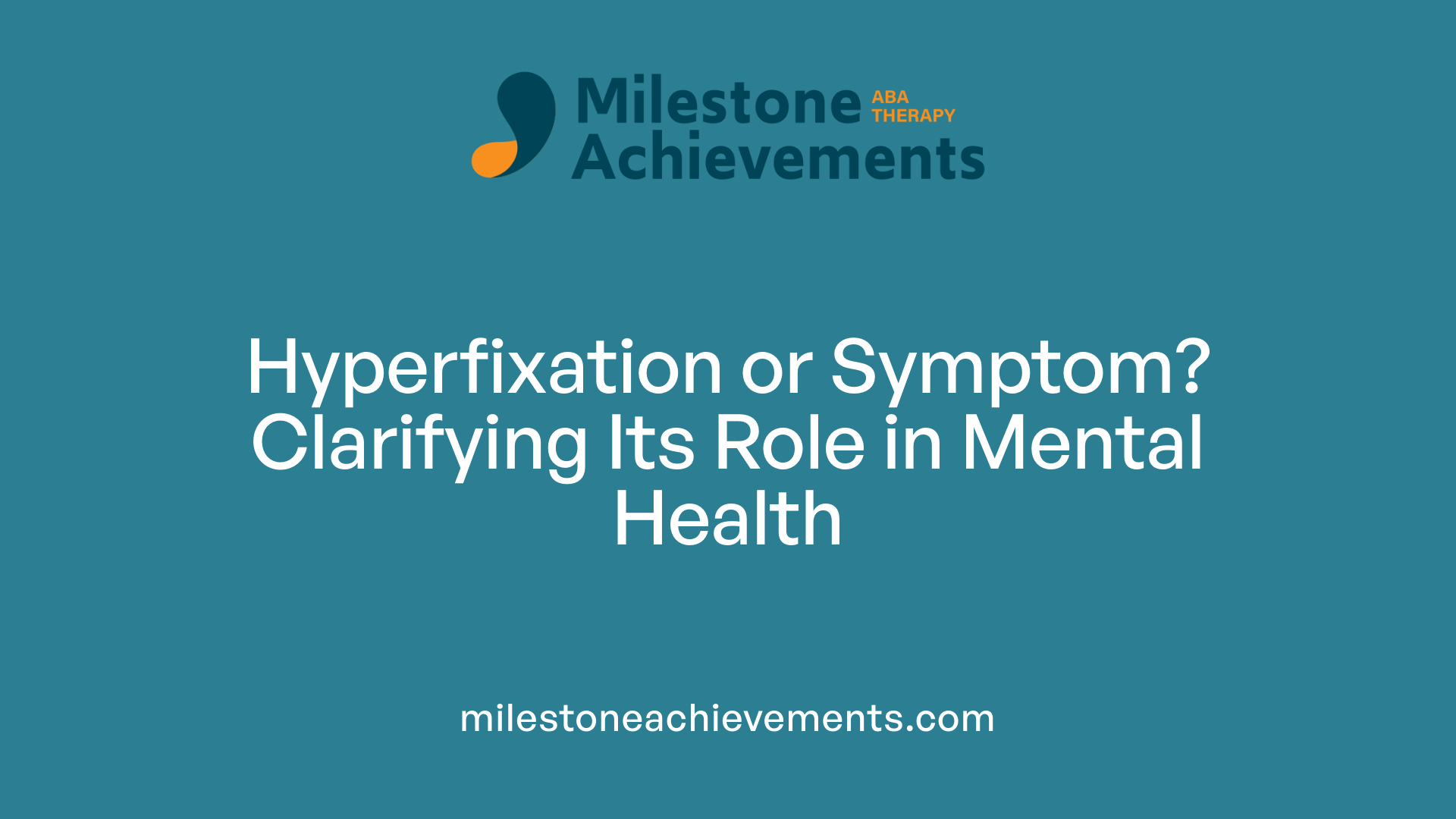
Diagnostic considerations
Hyperfixation often appears during an assessment of ADHD, as it is commonly observed in individuals navigating the condition. It entails an intense, prolonged focus on a specific interest or activity, often to the detriment of other responsibilities or needs. While it is not officially listed as a standalone diagnostic symptom, clinicians recognize hyperfixation as a behavioral pattern strongly associated with ADHD. It can be distinguished from the more short-term hyperfocus, which involves deep concentration on specific tasks. Hyperfixation's persistent and often obsessive quality can sometimes mimic symptoms of other mental health issues, such as OCD or anxiety, making thorough evaluation essential.
Relationship with ADHD symptoms
Hyperfixation has a close relationship with core ADHD traits, primarily driven by challenges in regulating attention and managing dopamine levels. It helps explain why individuals with ADHD might become so engrossed in particular topics or hobbies that they lose track of time or neglect other activities. This intense focus stems from neurobiological factors like dopamine surges, which reward engagement and motivate continued interest. However, hyperfixation is broader in scope than hyperfocus; it can last for months or years and often has a compulsive or obsessive quality. It may serve as a psychological escape from stress or negative emotions but can hinder daily functioning if it becomes uncontrollable.
Core neurobiological features
The underlying neurobiology of hyperfixation involves disruptions in dopamine regulation and executive function. Dopamine, which plays a significant role in motivation and reward, tends to be dysregulated in people with ADHD. Activities that increase dopamine levels—such as specific hobbies or interests—become highly motivating, leading to hyperfixation. Additionally, deficits in executive functions like impulse control and time management make disengaging from hyperfixations difficult. This is compounded by sensory sensitivities and interoceptive challenges. The neurological mechanisms that drive hyperfixation are similar to those involved in hyperfocus, but hyperfixation tends to be more persistent and less goal-directed, often driven by psychological and emotional needs.
| Aspect | Description | Examples |
|---|---|---|
| Duration | Hours, days, or months | Long-term obsession with a hobby |
| Motivating Factor | Dopamine surges, emotional reward, stress relief | Repeatedly binge-watching a series |
| Impact on Daily Life | Can interfere with responsibilities or routine tasks | Neglecting chores or work |
| Relation to Other Conditions | Also seen in autism, OCD, anxiety, depression | Food fixes, special interests |
| Nature | Often compulsive, automatic, hard to control | Persistent focus on particular foods or topics |
Overall, hyperfixation is a complex phenomenon rooted in the neurological framework of ADHD, but it also spans other psychological and neurodevelopmental conditions. Understanding its distinctions from hyperfocus and its various manifestations can aid in better management and therapeutic approaches.
Impact of Hyperfixation on Daily Life and Relationships
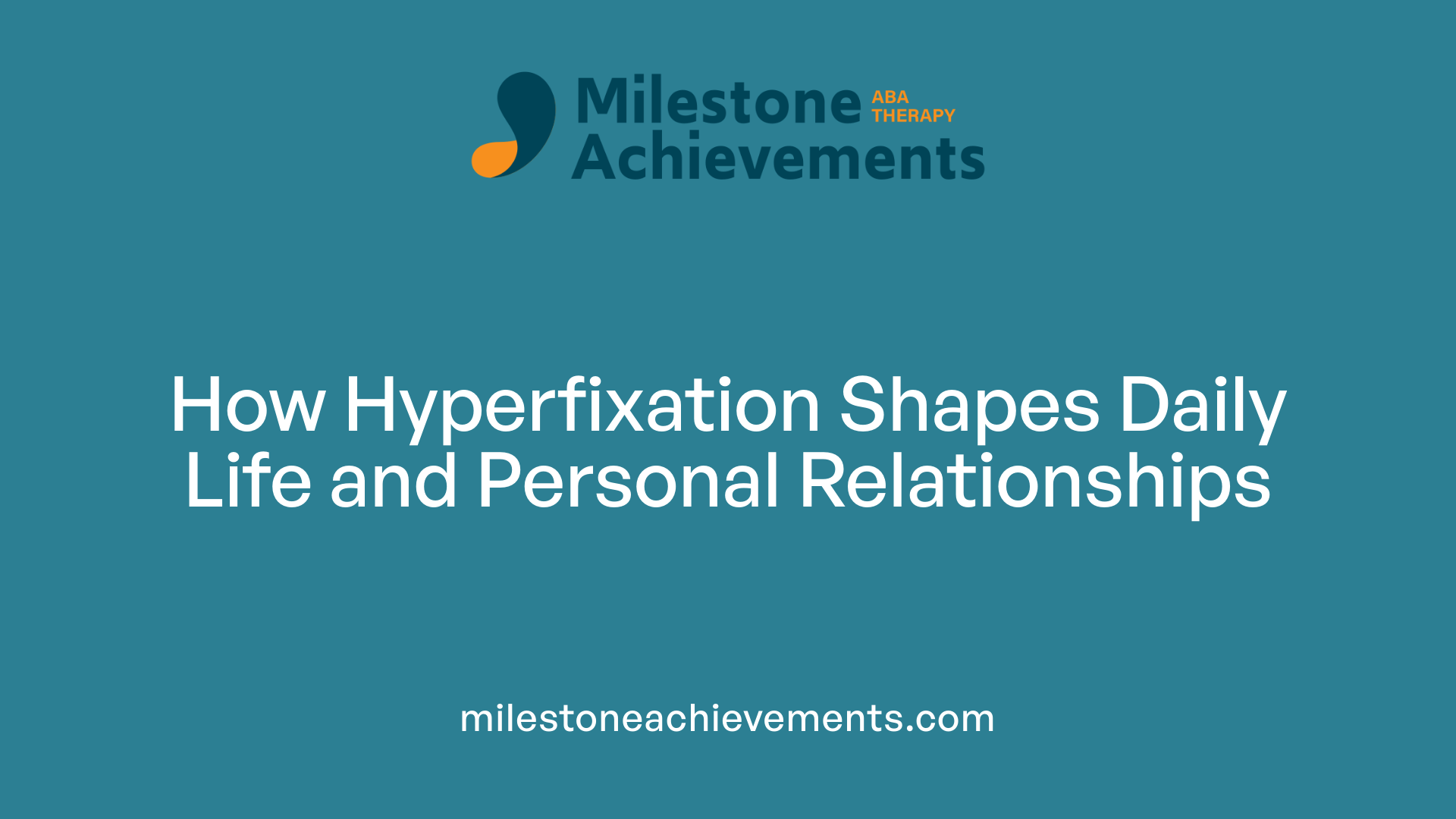
How does hyperfixation impact relationships and daily life?
Hyperfixation can significantly influence both personal relationships and day-to-day activities. When individuals with ADHD become hyperfixated on a specific hobby, interest, or activity, their focus can become so intense that they neglect other responsibilities, self-care, and social interactions. This deep absorption often leads to social withdrawal, as they may spend hours engrossed in their fixation, sometimes losing track of time.
Relationships can suffer when loved ones feel neglected or misunderstood, especially if the person with hyperfixation dismisses social cues or important commitments. For example, someone might forget an appointment or ignore household chores, resulting in frustration or concern from friends and family.
The impact extends to daily routines, causing disorientation and disrupting sleep patterns, meals, or personal hygiene. The inability to easily shift focus from the fixation to other tasks—known as difficulty transitioning—can create chaos in managing responsibilities.
While hyperfixation can lead to valuable skill development or productivity when channeled positively, unchecked hyperfixation may also promote feelings of guilt, anxiety, or emotional exhaustion. These emotional consequences can further strain relationships and impact mental well-being.
Managing hyperfixation involves awareness and strategic boundaries. Techniques such as setting time limits, using timers or scheduling tools, exploring a variety of interests, and seeking professional support can help individuals enjoy their passions without adverse effects. Ultimately, balanced management allows for maintaining healthy relationships and sustaining daily routines while still benefiting from the intense focus that hyperfixation provides.
Strategies for Managing and Harnessing Hyperfixation
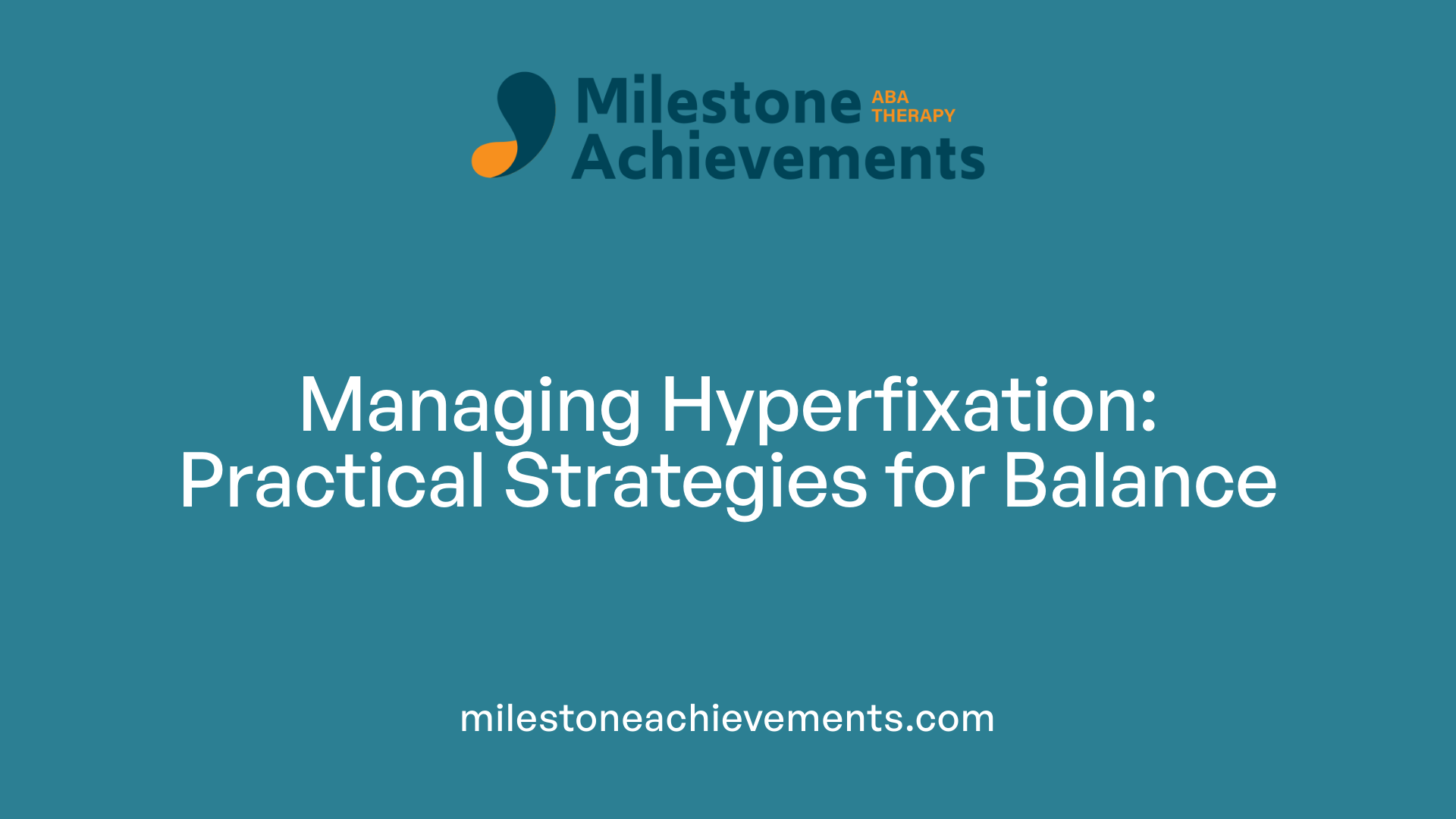
What strategies can help manage hyperfixation in ADHD?
Managing hyperfixation in ADHD involves implementing practical strategies that help individuals maintain control and balance over their intense focus. First, setting clear boundaries and time limits is essential. Using timers or alarms can serve as gentle reminders to take breaks or switch activities, preventing over-immersion.
Incorporating structured routines and scheduled breaks into daily life helps establish a sense of predictability and discipline. For example, dedicating specific times for hobbies, work, and rest can facilitate healthier engagement with interests. Developing routines also reduces the likelihood of neglecting responsibilities or overlooking self-care needs.
Mindfulness practices are valuable tools, such as body scans or breathing exercises, which increase awareness of hyperfixation tendencies. These practices encourage present-moment focus, helping individuals recognize when they are veering into obsessive or unproductive patterns.
Seeking support from therapists, support groups, or trusted friends and family members provides accountability and guidance. Professional therapy, like cognitive-behavioral therapy (CBT), can offer tailored strategies to manage hyperfixation effectively.
Lastly, engaging in activities that naturally boost dopamine—such as physical exercise, exploring new interests, or pursuing diverse hobbies—can help redirect focus. This reduces the compulsive draw of hyperfixation and fosters a more balanced engagement with various life aspects.
By applying these strategies, individuals with ADHD can harness their passions for growth and learning while minimizing potential disruptions caused by intense fixations.
Balancing the Benefits and Challenges of Hyperfixation
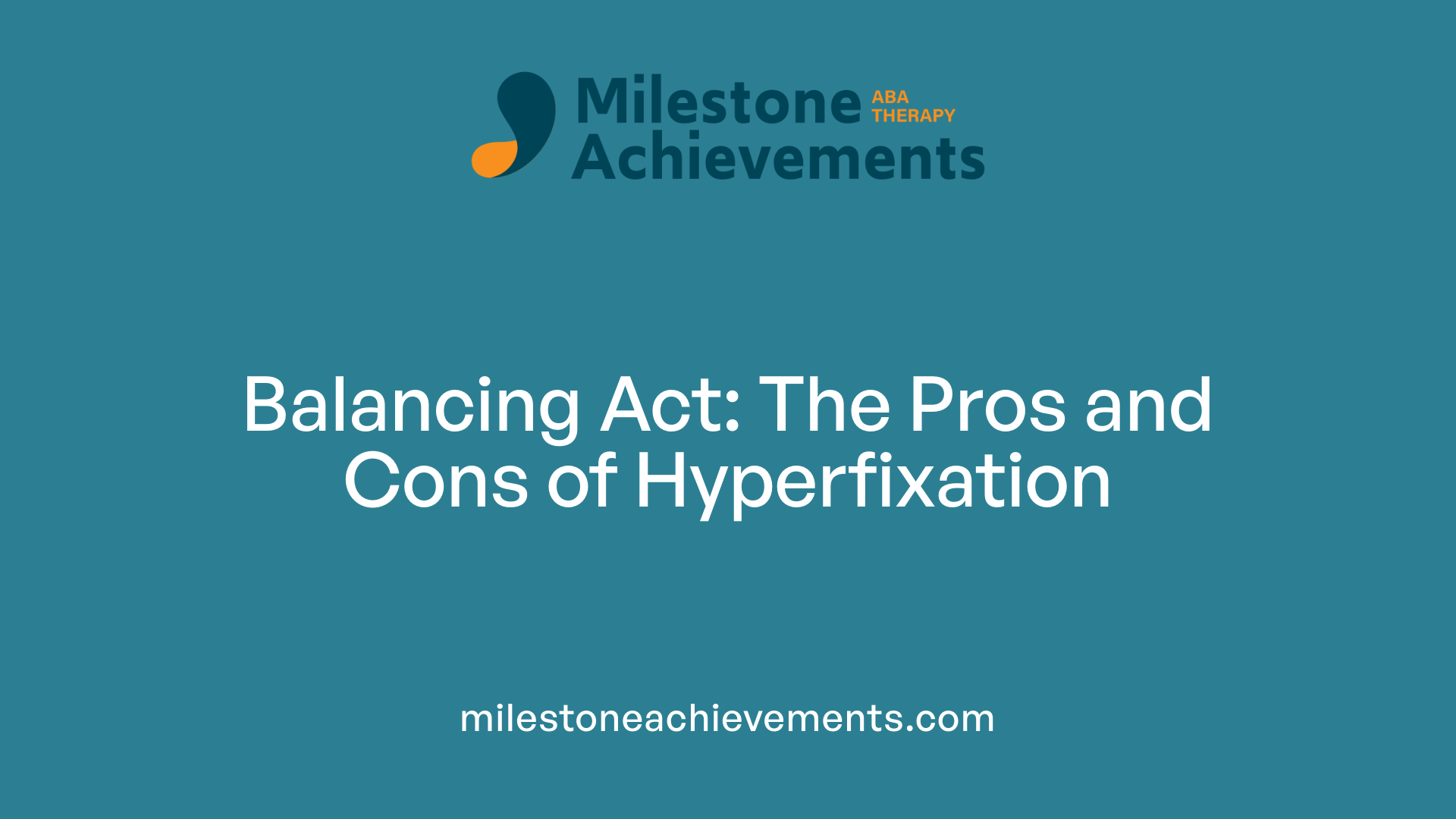
What are the benefits and challenges of hyperfixation?
Hyperfixation can serve as a powerful tool for personal growth and skill development. When deeply engrossed in an activity or topic, individuals—especially those with ADHD or autism—can achieve a level of mastery and understanding that might be difficult through traditional learning methods. This intense focus often results in rapid knowledge acquisition, creativity, and innovative ideas, acting as a catalyst for achievements in hobbies, education, or work.
On the other hand, hyperfixation also brings several challenges. One significant concern is the neglect of daily responsibilities, such as self-care, chores, or social interactions. When someone is caught in a hyperfixation, they may lose track of time and become disconnected from their environment, which can cause disruptions in routines and social relationships.
Emotionally, hyperfixation can lead to exhaustion, burnout, or feelings of guilt and shame. After an extended period of intense focus, individuals might experience a 'hyperfixation hangover,' characterized by emptiness or frustration. This emotional toll emphasizes the importance of managing hyperfixation wisely.
How can one achieve a healthy balance?
To enjoy the benefits of hyperfixation without suffering its drawbacks, it is crucial to establish boundaries and routines. Setting time limits for activities, scheduling breaks, and using tools like timers or alerts can help prevent over-immersion. Exploring a variety of interests or rotating focus areas can also reduce the risk of becoming overly fixated on a single topic.
Practicing mindfulness and self-awareness supports early recognition of when hyperfixation begins to dominate. Developing routines that include dedicated times for responsibilities and relaxation helps maintain overall well-being. Seeking support from therapists or coaches can provide customized strategies to manage hyperfixation while nurturing passions.
Ultimately, the goal is to harness hyperfixation as a source of motivation and skill growth, ensuring it remains a positive force rather than an obstacle. Embracing a balanced approach promotes sustained engagement, emotional health, and a more fulfilling pursuit of personal interests.
The Hyperfixation Hangover and Its Emotional Aftermath
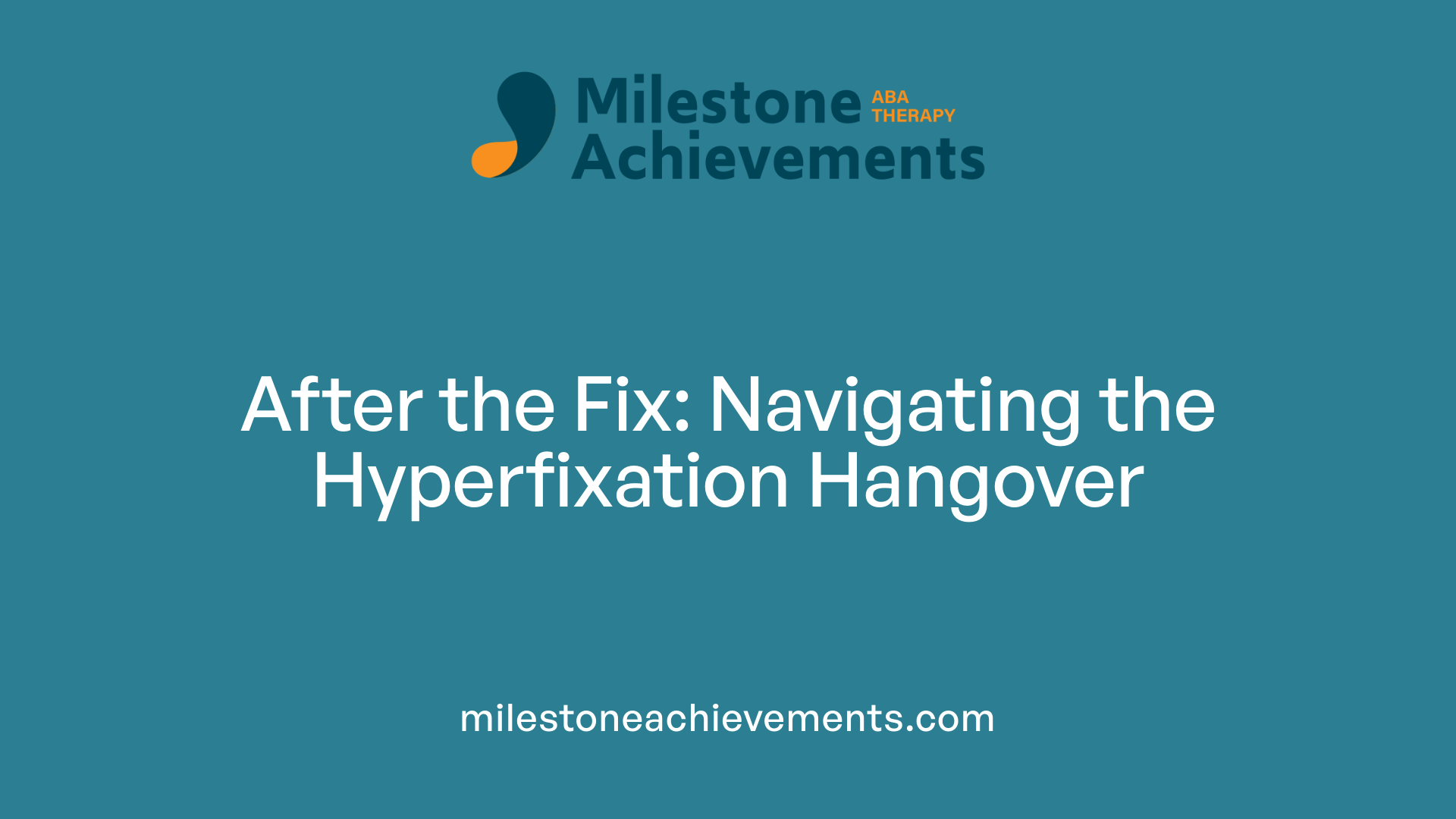
What is the 'hyperfixation hangover'?
The 'hyperfixation hangover' is a term used to describe the emotional and mental state that occurs after an intense period of hyperfixation. During hyperfixation, individuals become deeply absorbed in a particular interest, activity, or topic, often losing track of time and neglecting basic needs. Once the hyperfixation subsides, they may experience a sudden and overwhelming sense of emptiness, burnout, or exhaustion.
This abrupt disengagement can lead to feelings of guilt for neglecting responsibilities, shame about the lost time, and decreased self-esteem. Many report feeling drained, confused, or even irritable as they try to re-enter their regular routines. The emotional aftermath can sometimes resemble mild depression or anxiety, especially if hyperfixation episodes happen frequently or last for long periods.
Signs of burnout and depression
Common signs of a hyperfixation hangover include fatigue, irritability, and a lack of motivation. Individuals might also notice a sense of regret or guilt about how they spent their time, or frustration over their inability to control the fixation. This can spiral into feelings of worthlessness or low mood, potentially developing into depression if these episodes happen repeatedly.
In addition, some may feel disconnected from friends, family, or other interests, emphasizing a sense of isolation. Physical symptoms like trouble sleeping, headaches, or muscle tension can also occur, compounding emotional distress.
Feeling of emptiness or guilt
After a hyperfixation, feelings of emptiness are common. The period of intense focus often ends abruptly, leaving a void that can be emotionally unsettling. Guilt may stem from the realization of neglected responsibilities or damaged relationships during the fixation period.
Many individuals experience shame about the loss of control, especially if hyperfixations interfere with daily life or social functioning. These feelings can be persistent, making it harder to move forward until the emotional state is addressed.
Strategies for recovery and self-care
Managing the emotional fallout of hyperfixation involves gentle self-care and practical strategies. Being kind to oneself is crucial—recognizing that hyperfixations are often driven by neurochemical factors like dopamine needs can foster compassion.
Gradually implementing grounding activities, such as mindfulness meditation, deep breathing exercises, or physical activity, can help restore emotional balance. It’s helpful to establish routines that include scheduled breaks and transitions to prevent burnout.
Setting boundaries on hyperfixation episodes by using timers or schedule apps can allow more control over how long a person engages in an activity. Exploring new interests or revisiting hobbies in a more balanced way can also prevent excessive fixation and its aftermath.
Seeking support from mental health professionals—such as therapists trained in cognitive behavioral techniques—can provide valuable tools for managing hyperfixation patterns and their emotional consequences. Over time, fostering self-awareness and developing healthier triggers and coping mechanisms can reduce the intensity of the hyperfixation hangover and promote emotional well-being.
Optimizing Life with Hyperfixation: Towards a Balanced Approach
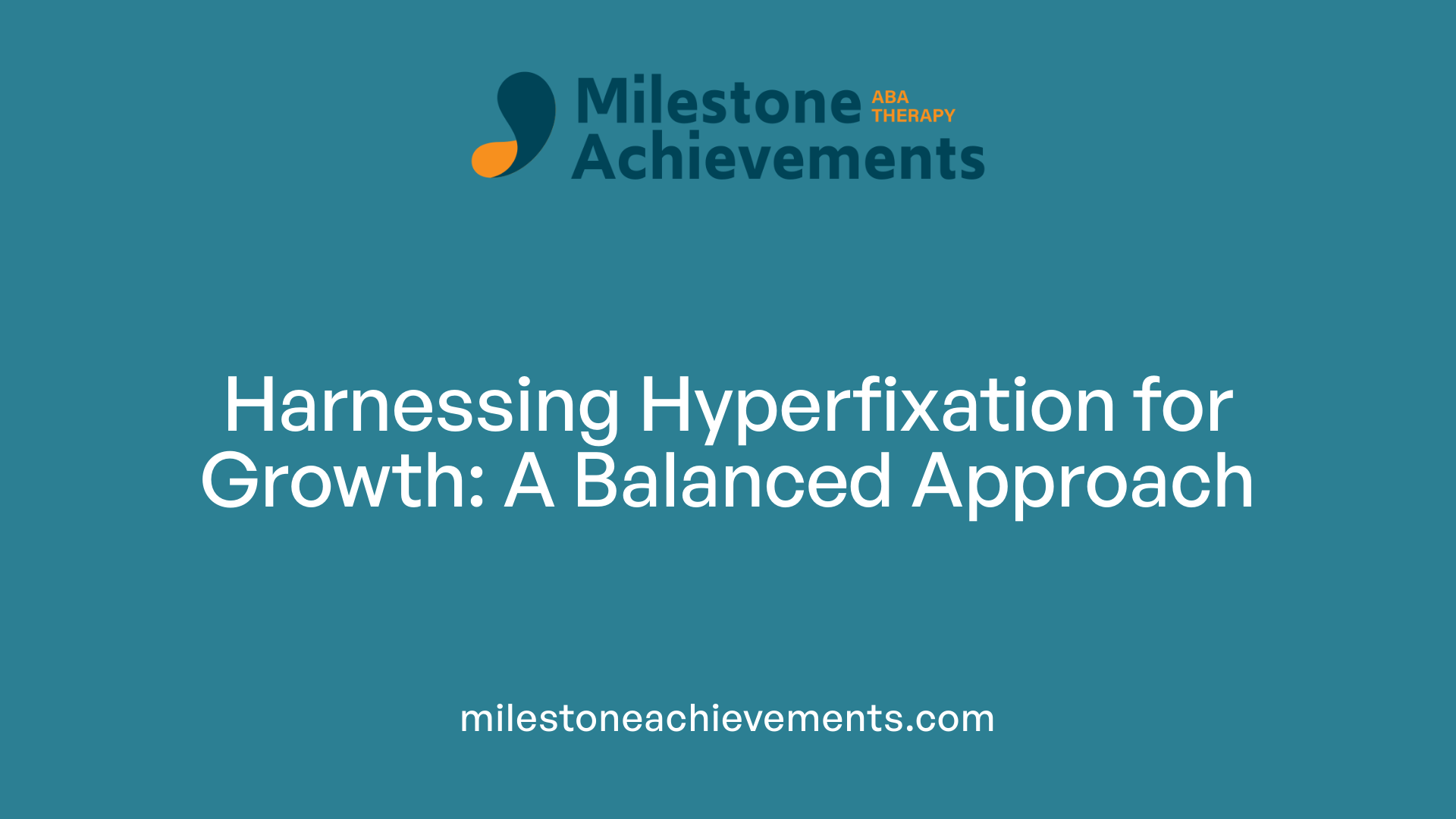
How can one harness hyperfixation for positive outcomes?
Hyperfixation, especially in the context of ADHD, can be a powerful tool for personal growth and skill development if managed appropriately. Recognizing its potential allows individuals to turn intense focus into achievements, such as mastering a new language, developing artistic talents, or gaining technical expertise.
To harness hyperfixation positively, it’s essential to approach it with strategic planning. Setting clear boundaries and time limits can help prevent over-immersion, which often leads to neglecting other responsibilities or burnout. For example, using timers or scheduling specific periods dedicated to hyperfixated activities ensures focus does not spill over into other important areas of life.
Establishing routines and incorporating regular breaks are vital as they improve sustainability. Breaks provide mental refreshment and reduce fatigue, allowing individuals to maintain their focus over longer periods without adverse effects.
Seeking professional support can significantly enhance the ability to manage hyperfixation healthily. Therapists or coaches specializing in ADHD can offer personalized techniques, such as cognitive-behavioral strategies, to cultivate self-awareness and self-compassion.
Furthermore, leveraging hyperfixation as a learning tool promotes not only skill acquisition but also increases confidence and enjoyment in pursuits. Engaging deeply with interests can lead to profound knowledge and mastery, which may also open new career or social opportunities.
This balanced approach emphasizes the importance of structured planning, self-awareness, and external support to transform hyperfixation from a potential obstacle into a beneficial asset, contributing to overall well-being and success.
Navigating the Neurodivergent Focus Landscape
Understanding hyperfixation and its overlap with ADHD is crucial in harnessing its potential as a strength and mitigating its challenges. Recognizing the neurological underpinnings—such as dopamine regulation and executive function deficits—can inform effective management strategies. Differentiating hyperfixation from hyperfocus and obsession helps in identifying appropriate support and interventions. By developing awareness, setting boundaries, and seeking professional guidance, individuals can transform hyperfixation into a tool for learning, creativity, and personal growth while maintaining emotional and social well-being. Ultimately, embracing this intense focus as part of neurodivergent expression opens pathways to healthier and more fulfilling lives.
References
- ADHD & Hyperfixation: The Phenomenon of Extreme Focus
- Hyperfixations In ADHD - Simply Psychology
- ADHD & Hyperfixation: Understanding the Phenomenon of Extrem
- Food Hyperfixation and ADHD | How ADHD can shape your habits
- ADHD Insider: The Lesser Known Twin of Hyperfixation
- Special Interest vs. Hyperfixation: Differences and Resources
- Is It ADHD or Autism—or Both? | Understanding the Overlap
- Hyperfixation vs Hyperfocus: ADHD, Autism, and Mental Illness
- ADHD and the 'Hyperfixation Hangover': Why You Lose Interest ...
- Hyperfocus & ADHD - MentalHealth.com


Partner with us on your child's journey
Milestone Achievements offers evidence-based ABA therapy to help children with autism reach their full potential. Together we’ll set meaningful goals and celebrate progress every step of the way.
Start ABA Services Today




